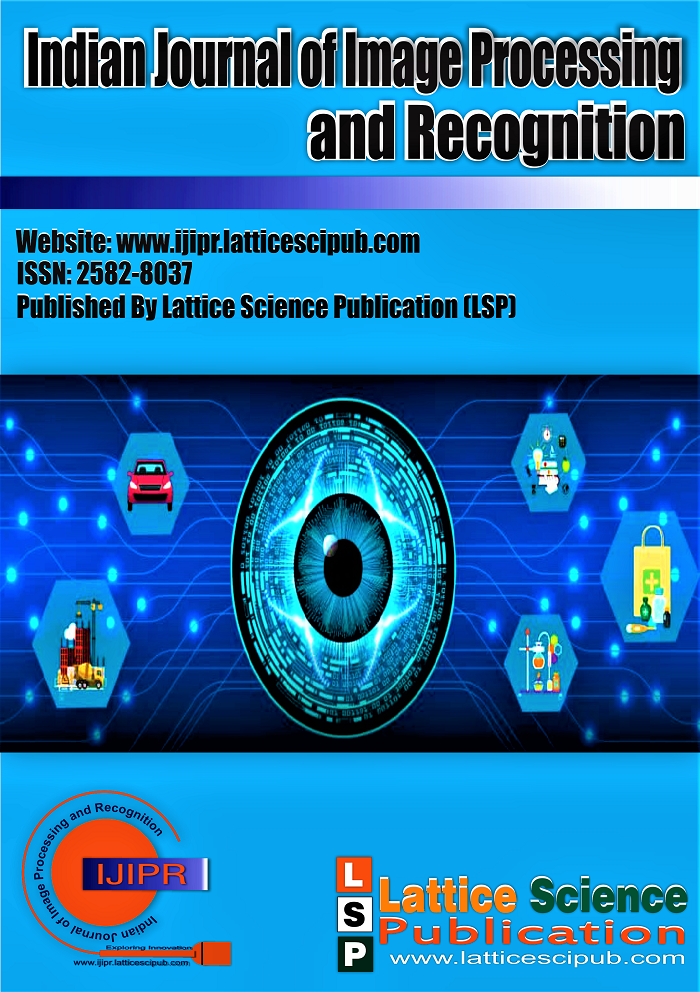Image Segmentation Based Automated Skin Cancer Detection Technique
Main Article Content
Abstract
Skin cancer is a prevalent and deadly disease that affects millions of people worldwide. Early detection and diagnosis of skin cancer can significantly improve the chances of successful treatment and recovery. This study proposes a skin cancer segmentation and detection system using image processing and deep learning techniques to automate the diagnosis process. The system is trained on a dataset of skin images and uses a deep learning algorithm to classify skin lesions as benign or malignant. The performance of the system is evaluated using various metrics, including accuracy, precision, recall, and F1 score. The results show that the proposed system achieves high accuracy in detecting and classifying skin lesions as benign or malignant. Additionally, the proposed system is compared with other state-of-the-art methods, and it is found that the proposed system outperforms them in terms of accuracy and speed. The study contributes to the advancement of deep learning and image-processing techniques for medical diagnosis and detection. The proposed system can have significant implications in improving the accuracy and speed of skin cancer diagnosis, thereby improving the chances of successful treatment and recovery.
Downloads
Article Details

This work is licensed under a Creative Commons Attribution-NonCommercial-NoDerivatives 4.0 International License.
How to Cite
References
Desisto, J., “Comprehensive Molecular Characterization Of Pediatric Radiation-Induced High-Grade Glioma. Nature Communications” https://www.nature.com/articles/s41467-021-25709-x
Lazure, F., “Transcriptional Reprogramming Of Skeletal Muscle Stem Cells By The Niche Environment. Nature Communications” https://doi.org/10.1038/s41467-023-36265-x
Liberini, V., “Radiomics And Artificial Intelligence In Prostate Cancer: New Tools For Molecular Hybrid Imaging And Theragnostic. European Radiology Experimental,”https://doi.org/10.1186/s41747-022-00282-0
LIN, B, “Collectively Stabilizing And Orienting Posterior Migratory Forces Disperses Cell Clusters In Vivo. Nature Communications,” Https://Doi.Org/10.1038/S41467-020-18185-2
MILAN, D.,“Artificial Intelligence With Deep Learning In Nuclear Medicine And Radiology. EJNMMI Physics,” Https://Doi.Org/10.1186%2Fs40658-021-00426-Y
SHAH, H., “Modern Diagnostic Imaging Technique Applications And Risk Factors In The Medical Field: A Review. Biomed Research International, 2022.” Https://Doi.Org/10.1155/2022/5164970
SOARES, M.J., “Biokinetics, Dosimetry, And Radiation Risk In Infants After 0RW1S34RfeSDcfkexd09rT399m1RW1S34RfeSDcfkexd09rT3Tc- AG3 Scans.EJNMMI Research,“ Https://Doi.Org/10.1186/S13550-017-0356-2
THIRIMANNE, “High Sensitivity Organic Inorganic Hybrid X-Ray Detectors With Direct Transduction And Broadband Response. Nature Communications, 9, Pp. 1-10.” Https://Www.Nature.Com/Ncomms/
WYLENSEK, D.,“A Collection Of Bacterial Isolates From The Pig Intestine Reveals Functional And Taxonomic Diversity. Nature Communications, 11(1)”. Https://Www.Nature.Com/Articles/S41467-020-19929-W
ZONG, D., HUANG, B., “Chromatin Accessibility Landscapes Of Immune Cells In Rheumatoid Arthritis Nominate Monocytes In Disease Pathogenesis. BMC Biology, 19, Pp. 1-15.” Https://Doi.Org/10.1186/S12915-021-01011-6
PREM J. PATIL1, “Skin Disease Detection Using Image Processing Technique “ Https://Www.Irjet.Net/Archives/V7/I6/IRJET-V7I6120.Pdf 12. MEENAKSHI M M, “Melanoma Skin Cancer Detection Using Image Processing And Machine Learning.” DOI : 10.17577/IJERTCONV7IS10012
ENAKSHI JANA*, “Research On Skin Cancer Cell Detection Using Image Processing”Https://Doi.Org/10.1109/ICCIC.2017.8524554
FLAVIA GRIGNAFFINI, FRANCESCO BARBUTO. “Machine Learning Approaches For Skin Cancer Classification From Dermoscopic Images: A Systematic Review” DOI:10.3390/A15110438





